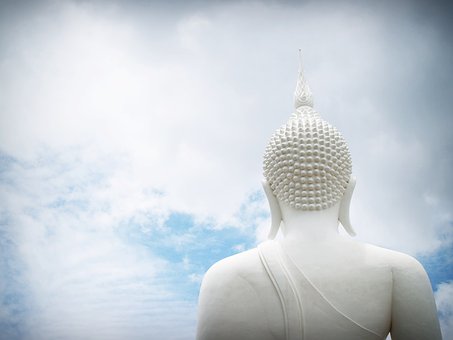Who was Buddha and did he intend to begin a religion? Buddhism is one of the three major religions to come from Asia, with the other two being Hinduism and Confucianism. Buddhism was birthed in Hinduism. Each of the Asian religions attempts to do as all religions seek to do and offer a definition of truth and reality. Confucianism focuses exclusively on the natural world and personal conduct, while Hinduism appeals to spiritual explanations in describing reality.
Buddhism tends to fall in the middle between Confucianism and Hinduism. Buddhism stresses the importance of the natural in the search for enlightenment and in such things as the behaviors prescribed with the Eightfold Path. Conversely, enlightenment, or breaking free of suffering in life, is a spiritual experience.
Biography
The teachings of Buddhism come from his life. Siddhartha Gautama (Buddha) was born in the 6th century BCE. He was born in Lumbini, located in modern Nepal. Siddhartha’s mother died during childbirth.
A soothsayer predicted that Siddhartha would become great in either politics or religion. His father was a noble and decided to direct Siddhartha towards politics by shielding him from the suffering that exists in the world. He created a perfect environment for Siddhartha, where he experienced no suffering in life.
 As a young man, Siddhartha had questions about life no one could answer to his satisfaction. He convinced his father to allow a trip to Europe where he hoped to find the answers he sought. The trip was scripted carefully to make sure he encountered no examples of suffering along the way.
As a young man, Siddhartha had questions about life no one could answer to his satisfaction. He convinced his father to allow a trip to Europe where he hoped to find the answers he sought. The trip was scripted carefully to make sure he encountered no examples of suffering along the way.
However, he did see the sick and dying and asked his guide about the plight of these people. He was told they were suffering and that everyone would eventually experience the same suffering at some point. He encountered a holy man and was told the man had left all in hopes of finding the truth that would liberate his soul from suffering.
The experience left an imprint on Siddhartha. He returned home and left everything at the age of 29 to pursue his own journey in search of truth that would free his soul from suffering. Siddhartha became a holy man in India and eventually developed a group of followers. Siddhartha believed that only by emptying oneself of materialism would enlightenment be possible.
The Middle Path
After some time of fasting and sleep deprivation, Siddhartha decided that the total denial of the body led to suffering too. Out of the experience came the first tenet of Siddhartha’s teachings – the Middle Path. The Middle Path is a version of a balanced life. Siddhartha described the Middle Path as a life that allowed for physical pleasure as well as spiritual pursuits in search of enlightenment.
The “Awakened” One
Siddhartha decided to use meditation as a vehicle for achieving enlightenment. After one extended experience with meditation, Siddhartha reported that he finally received the revelation for how to live an enlightened life. The details of the revelation he would not share, but the path for others to experience their revelation became the hallmark feature of Buddhism. The experience motivated Siddhartha to change his name to Buddha or the “Awakened” One.
Teachings
Buddhism, though a religion, is non-theistic. Buddhism is about finding the truth that results in enlightenment and frees the soul from suffering. The teachings of Buddhism fall to Four Noble Truths
1. The truth of life as suffering
2. The truth of the cause of suffering
3. The truth of the end of suffering
4. The truth of the path that frees us from suffering
The Four Noble Truths prescribe the Eightfold Path. The Eightfold Path describes the moral expectations of religion.
1. Right view
2. Right intention
3. Right speech
4. Right action
5. Right livelihood
6. Right effort
7. Right mindfulness
8. Right concentration
All of these behaviors promote wisdom, ethics, and the importance of the mind. These matters are important because our intentional actions created karma. Karma produces consequences that can promote or interfere with our ability to achieve enlightenment. Good and evil are not moral issues but describe the wholesomeness or unwholesomeness of actions.
Conclusion
Buddhism is a popular “religion” in some parts of the world such as Asia. In the West, Buddhism is often treated more like a philosophy or way of life. The promotion of morality and personal responsibility certainly fits Western values, and the emphasis on enlightenment is a positive value associated with education.
Bibliography
Prothero, G. (2010). “God is not one.” New York: Harper Collins





